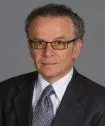EV Newsletter Vol. 1 No. 2
Editor's Notes
Welcome to the second edition of Plugged In, where we discuss the latest in the world of electric vehicles with legal and industry insight from our lawyers. While the auto industry is undergoing a remarkable transformation, one thing is for certain – the journey is challenging and unpredictable. For the EV experiment to be successful and sustainable, a lot on the periphery has to converge in a timely and concurrent manner, including alternate sources of energy, a circular economy, and alignment of goals. In this edition, Bob Weiss questions the conventional wisdom and Mark Heusel reflects on the role of East Asian suppliers in United States' EV adoption. I hope you will find their perspective thought-provoking and engaging.
—Rasika Kulkarni | Attorney
A Second Look
There is a natural tendency for many, if not most people, to adopt the majority approach, as they say "go with the flow." They often do so without questioning or undertaking any critical analysis. It is the objective of this column, when appropriate, to analyze and evaluate the basis of the contrarian approach and its possible merit, i.e., to "take a second look."
There has been a lot written of late, mostly critical, regarding Toyota coming late to the EV party and continuing to hedge its EV strategy in comparison to the "all in" EV strategy adopted by most of its competitors. A recent article in the Wall Street Journal titled "Toyota Needs a New EV Road Map" addresses Toyota's commitment to hybrid technology as "...a nuanced argument that can come across as a self-interested effort to put the brakes on EVs – a technology that Toyota hasn't mastered." The gist of the article is that Toyota's initial balanced strategy to pursue a dual path of hybrids and EVs was a serious miscalculation when contrasted to its competitors' "all in" EV strategy.
There is considerable evidence to support the criticism of Toyota's strategy. Recent S&P Global Strategy data suggests that Toyota is seeing previously loyal customers purchasing competitors' pure EV models. It would also seem to fly in the face of the reported $500 billion investment being made by the industry through 2030 and the additional hundreds of billions of government investment and subsidies to facilitate and expedite the transition to all EVs. A New York Times article appearing in its February 10th edition reported that, sooner than projected, sticker prices for electric vehicles are falling closer to the point where they could soon be in parity with gasoline powered vehicles, citing government incentives and falling lithium and cobalt prices and manufacturing efficiencies as contributing factors.
In a recent article in Seeking Alpha, it was reported that in December of last year, Akio Toyoda, Toyota's president and chief executive, who has since then announced he is stepping down, said:
"I believe we need to be realistic about when society will be able to fully adopt Battery Electric Vehicles (BEV) and when our infrastructure can support them at scale. Because just like the fully autonomous cars that we were all supposed to be driving by now, I think BEV's are just going to take longer to become mainstream than the media would like us to believe. And frankly, BEV's are not the only way to achieve the world's carbon neutrality goals."
Toyota has argued that the future of carbon reduction will be best served by a number of different technologies, not exclusively by zero-emission vehicles. He believes that his viewpoint on batteries is widely shared in the automotive industry – though it isn't openly expressed.
Mr. Toyoda told reporters during a visit to Thailand, as reported in The Wall Street Journal:
"People involved in the auto industry are largely a silent majority. That silent majority is wondering whether EVs are really OK to have as a single option. But they think it's the trend so they can't speak out loudly."
Toyota acknowledges that its EV business plan needs to be energized and revamped; but not in the sense that it needs to focus exclusively on EVs. Automotive News reports that Koji Sato, who will become CEO as of April 1st, has committed to revamp Toyota's EV strategy and accelerate Toyota's roll-out of EVs; but will continue its multi-pronged powertrain offering strategy of reaching carbon neutrality through a combination of EVs, plug-in hybrids, hybrids and hydrogen powered vehicles.
Although there is little doubt that EVs are the wave of the future, there are considerable challenges to the projected rapid widespread adoption of EVs. Those challenges include:
1) the ability of manufacturers to obtain adequate quantities of raw and processed materials for battery manufacturing, which are largely controlled by companies outside the U.S.
2) financial distress of suppliers
3) the ability to both enhance the power grid and to build out adequate recharging infrastructure
4) the uncertain continuation of government subsidies and tax incentives to businesses and consumers, and
5) recession and geopolitical risks of a polarizing and adversarial global environment.
The failure to overcome any one or more of these challenges could significantly set back the timing of the full-scale EV transition. Although it is beyond the scope of this article to take a deep dive into those challenges, and much has been written on the subject, the following is a brief overview of a few of these formidable challenges.
Availability of Critical Materials
As my colleague Mark Heusel points out in his article below, to mitigate supply chain risk, OEMs are entering into arrangements with foreign battery manufacturers to establish manufacturing facilities in the U.S. No question that those facilities, once operational in the next few years, will mitigate the risk, but won't eliminate the risks. Those operations will still be largely dependent on raw material from overseas suppliers. A recent report published by Toyota's Research Institute notes the significant projected supply shortage of lithium, which even if consumer demand is there, would limit capacity to manufacture full electric vehicles.
Financial Distress of the Supply Base
It has been widely reported that suppliers' profit margins are being pressured by volatile production schedules and increasing costs. Reuter's reports that chip shortages, lost production and increased material costs are expected to persist in 2023. A recent article in Automotive News titled: "Another Rough Year May be Ahead for Automotive Suppliers" contains the following quote from Paul Carrannanto, a principal in the industrial manufacturing and automotive sector of PwC: "The squeeze is really being applied to suppliers right now because of the drop in sales volumes, as well as the rising raw material and labor costs that continue." The article cites a PwC analysis stating that 42% of suppliers reported some level of financial distress in the first half of 2020, up from 27% in 2021. The viability of undercapitalized suppliers could be at risk should these conditions continue through 2023.
Availability of Adequate Charging Infrastructure
Regarding the adequacy of the power grid to generate and distribute charging capacity to ultimately charge tens of millions of electric vehicles, there are a number of challenges and uncertainties. For example, will the power grid be adequate to charge tens of millions of vehicles? Perhaps, but the consensus is that it will require hundreds of billions of dollars of investment to do so. And, will the local legs of the grid be adequate to transmit, on a sustainable and reliable basis, the electricity to millions of homes and businesses? To the extent that doing so will require limitations on the timing of charging by the car owner, will that undermine or at least factor into consumer adoption?
Sustainability of Favorable Government Regulation, Investment, Subsidies and Incentives
There is no question that the government plays a major role in expediting the transition to EV. However, not all political parties share the enthusiasm for incurring the costs associated with being the driving force for expeditious adoption. Should government contributions diminish, it could have a material impact on customer adoption. A recent Wall Street Journal article noted the material decline of EV sales for January in Germany upon the expiration of government subsidies at the end of the year. The potential confluence of a recession, change of political control and impetus for deficit reduction could materially reduce government support.
It seems to me that when one considers the many material challenges and risks to the aggressive timeline for full-scale EV transition, Toyota's strategy may well prove the better strategy in the long-run. Only time will tell.
I wonder how many in the industry share Toyota's perspective. We would very much appreciate hearing your views. If you have an opinion on this topic, please let us know by contacting me at rweiss@dickinson-wright.com. Please indicate whether we may publish your response and if so, whether we may identify you as the author. We will hold all responses in confidence and only publish comments when the author has expressly authorized us in writing to do so. We hope to share your feedback with our readers in a future edition of Plugged In.
—Robert Weiss | Of Counsel
Co-Chair, EV Initiative
Will Washington's Decoupling Agenda Delay the EV
Transition?
For years, U.S. automakers pushed back against Asia's move towards Battery Electric Vehicles (BEV), allowing Chinese OEMs and suppliers to develop technologies and gain a firm foothold in electrification. And, then, in a flip of a switch, the Big 3 decided to jump in the game with both feet, but with a distinct disadvantage as the initiative was already years in development in Asia, and U.S. lawmakers were indifferent to supporting any transition away from oil. While the industry announced major investments, Washington had more difficulty seeing the future. In August 2021, President Biden took a historic step by calling for OEMs to produce 50% of their new U.S. vehicles with zero emissions by 2030. As a result, 2022 was a remarkable year for the transformation from internal combustion engines to battery-powered electric vehicles (BEV). With the industry, and now Washington, firmly behind a transition to BEV, major automakers in the United States have unequivocally pledged to phase out their internal combustion passenger cars for zero-emission vehicle alternatives by the end of this or the next decade. Notable strategic blueprints of these OEMs include Stellantis's Dare Forward 2030, Ford's New Battery Capacity Plan, and GM's All-Electric Future. Even major Japanese OEMs, who had been wading in the tide of BEV, are questioning whether the hybrid play may not be the future.
As OEMs in the U.S. move towards transportation electrification, battery and related component suppliers from East Asia play an important and indispensable role in facilitating these lofty goals on the timetable promoted by the President. 2022 was a big year for these overseas battery manufacturers to shine in the U.S. auto market. With Ford's recent announcement to contractually align with Contemporary Amperex Technology Co. (CATL), for advanced LFP cells, it is clear that Washington's go-it-alone mentality is unrealistic in the short-term and unhealthy for an industry that has depended on a global supply chain for decades. The footprints of other well-known battery suppliers from Asia are also crossing the United States. In May 2022, Stellantis and Samsung announced their joint venture for an electric vehicle battery plant in Indiana. In October 2022, Honda and LG Energy Solution announced a $3.5 billion investment to build a joint venture EV battery plant in Ohio. In November 2022, Panasonic Energy began constructing a new lithium battery manufacturing facility in Kansas with Tesla as its primary customer. In December 2022, SK Innovation announced the ground-breaking of a battery manufacturing campus with Ford in Kentucky. And, then, there have been major commitments by GM to partner with LG Energy to develop the Ultium EV platform, which GM hopes will secure its place as a leading BEV manufacturer.
One inescapable fact that all of these announcements share is that OEMs recognize the importance of East Asia for these products. It is an acknowledgement that the region, including China, remains key to the U.S. development of BEV. However, Washington has been ambivalent about accepting the importance of this dynamic; pushing forward an agenda that incentivizes production of BEVs in the U.S. but frustrating trade with the region. President Biden's Executive Order 14037 marked the administration's moon shot to electrify, but Congress has also aggressively pushed the administration's agenda. The Infrastructure Investment and Jobs Act, signed into law by President Biden in November 2021, sets aside $7.5 billion for EV charging, including $5 billion for an EV charging formula grant program and a further $2.5 billion for fueling stations. Then, in August 2022, Congress passed the Inflation Reduction Act, which allocates around $374 billion towards climate and energy spending, including tax credits for EV purchases and manufacturing in North America. These tax credits are conditioned on hitting certain content percentages for critical minerals and components sourced from North America – the specifics and feasibility of such sourcing are still to be determined.
OEMs understand that the rules around these credits must recognize the importance of these industry dynamics. Case in point, Japanese and South Korean OEMs have suggested that the rules adopt "flexible thinking" for the new EV tax credits, including how quickly the battery supply chain can be localized. Although U.S. OEMs are ramping up their vertical integration of battery supply chains from mineral exploration and mining to recycling, it will take time to supply a market quickly, moving towards full BEVs. Until then, the industry understands that East Asia plays a vital role in battery cell production up and down the supply chain. The top 10 battery producers today are all from East Asia.
|
Top 10 EV Battery Manufacturers |
Market Share in 2022 |
|
CATL (Chinese) |
34% |
|
LG Energy Solution (Korean) |
14% |
|
BYD (Chinese) |
12% |
|
Panasonic (Japanese) |
10% |
|
SK Innovation (Korean) |
7% |
|
Samsung SDI (Korean) |
5% |
|
CALB (Chinese) |
4% |
|
Guoxuan (Chinese) |
3% |
|
Sunwoda (Chinese) |
2% |
|
SVOLT (Chinese) |
1% |
|
Source:https://www.visualcapitalist.com/the-top-10-ev-battery-manufacturers-in-2022/ |
As U.S. OEMs partner with East Asian Suppliers to produce battery cells, packs, and modules, they are fulfilling one of the goals of the prior (Trump) administration: To localize production and create U.S. jobs. Yet, some politicians continue to view these alignments with derision. In December 2022, Virginia's Governor refused to incentivize the Ford-CATL battery plant project in Virginia because of his fear that Ford would be a front to the Chinese Communist Party (CCP). Eschewing the opportunity for over $3B of investment and 2500 jobs from Ford Motor Company, a U.S. company fully in control of the project is certainly noteworthy but not isolated. In fact, other governors, members of congress, and state legislators continue to connect Chinese investment with the CCP – some states are even passing laws preventing foreign companies from owning real estate in their state. This bell-ringing is very similar to the fearful warnings launched in the 1980s about Japanese investment in the U.S. Citing national security concerns, Congress has also recently proposed and adopted laws negatively impacting foreign investment in the U.S., particularly for investment from China. Many are familiar with the active role that the Committee on Foreign Investment in the U.S. (CFIUS) has played in vetting foreign companies doing business in the U.S., but there is no shortage of proposed legislation sitting in Congress today aimed at investment from East Asia. For example, the proposed American Critical Mineral Independence Act of 2021 aims to reduce reliance on critical minerals sourced from East Asia.
Although not definitive, the global list of "critical minerals" includes lithium, nickel, cobalt, and other rare earth elements indispensable for EV battery production. Case in point, the U.S. and the Democratic Republic of Congo (DRC), and Zambia signed an MOU to develop jointly a supply chain for EV batteries. The DRC produces more than 70% of the world's cobalt, and Zambia is the world's sixth-largest copper producer and second-largest cobalt producer in Africa.
Despite the calls for decoupling from China and growing nationalism here and abroad, trade and industry continue to march on. After President Biden and President Xi's meeting in Indonesia in November 2022, the world's most important economic relationship finally returned to the negotiation table for global trade talks. On January 18, 2023, Secretary of Treasury Yellen met with the Chinese's top trade negotiator Liu He in Switzerland, where both agreed to enhance frank exchange with each other.
While the U.S.'s walk towards electrification independence is unmistakable, the industry realizes this is a marathon and not a sprint. Until the time that the U.S. shores up its exploration, mining, researching, and manufacturing capabilities for batteries, East Asia will play an important role in the U.S.'s transition to BEV. As foreign suppliers continue to expand their operations in the U.S. with their investment and technology, they are bringing to the U.S. considerable manufacturing capacities and employment opportunities, which inevitably support the U.S. auto industry's transition to battery electric vehicles.
—Mark Heusel | Member/Partner and East AsiaPractice Group Chair - China, Taiwan, Japan, Korea, ASEAN Region
The content of this article is intended to provide a general guide to the subject matter. Specialist advice should be sought about your specific circumstances.



